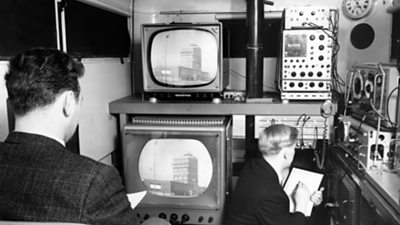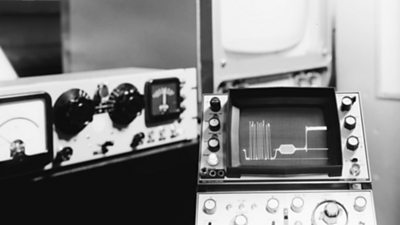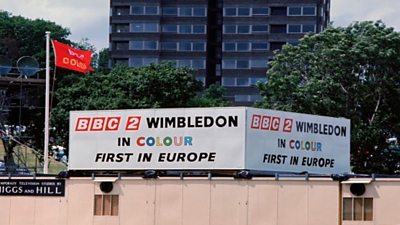1960
First Prototype Multi-Standard Converter
Used to convert to the American Standard, pictures of Princess Margaret's wedding in May 1960.
1961
Stockholm Conference on VHF/UHF planning
Detailed proposals for frequency allocation in Bands I, II, III, IV & V submitted by the Department to the conference via the Post Office.
1962
First colour transatlantic TV transmission by satellite
Using the Research Department's Slide scanner from Goonhilly Down to Andover, Maine.
1963
NTSC, SECAM and PAL Colour demonstrations to the EBU and ORIT
The UK adopted the PAL colour system in 1966. ORIT stands for the Organisation Regional Inter-American de Trabajadores.

1964
First studies into Digital Techniques for Television
1965
Sound-in-Syncs first assessed
A method of transmitting audio signals in the television signal line synchronising pulse period.

1966
625-line PAL colour television system adopted by the UK
1967
±«Óãtv Two transmits first regular colour television service in Europe
Beginning on the 2nd December 1967. The first colour broadcast came from Wimbledon that year.
Related links:

1968
First electronic Field-Store Standards Converter used for Mexico City Olympics
Used to convert 525/60 NTSC pictures from the Mexico City Olympics via satellite to 625/50 PAL at Television Centre. Its storage elements are quartz blocks.
1969
±«Óãtv One starts full colour service on the 15th November 1969
Related links:
Queen's Award for the Field Store Standard Converter
The Department's first Queen's Award for the Field Store Standards Converter (awarded with ±«Óãtv Designs Department).